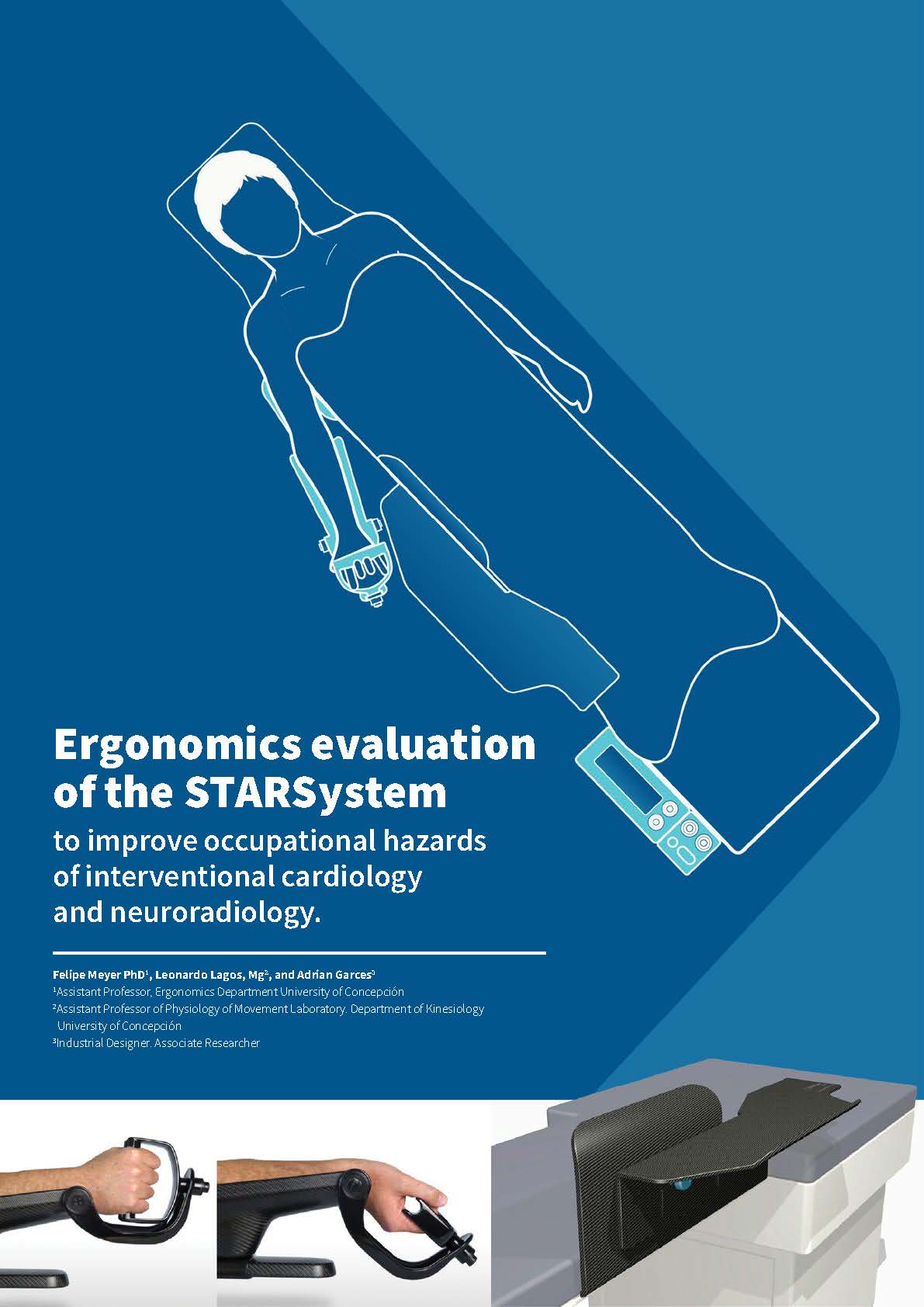
Summary
Working with Professors Felipe Meyer and Leonardo Lagos, and designer and researcher Adrian Garces from the University of Conception, we explored the ergonomic impact of the Adept Medical STARSystem, a radial access device, on interventional cardiologists and neuroradiologists.
Click below for access to the study by the Ergonomics Department of the University of Conception, original in Spanish:
Click below to download the English translations:
[Direct translation] - Ergonomic evaluation of the STARSystem to Improve Biomechanical Hazards in Physicians performing Cardiology and Neuroradiology
[Extended version with visuals] - Ergonomics evaluation of the STARSystem to improve occupational hazards of interventional cardiology and neuroradiology
---
Abstract
Practicing interventionalists are at risk of work-related musculoskeletal disorders due to poor working postures, lack of ergonomic support during procedures, and the cumulative effect of repeated physical exertion from rising case volumes. This study examines a radial access device, the Adept Medical STARSystem, and its influence on improving occupational hazards in the medical fields of interventional cardiology and neuroradiology through ergonomics.
The research is separated into two parts – quantitative and qualitative. The quantitative method utilised baropodometry study, oscillography, kinematics, and high-speed video systems to measure biomechanic and physiological results. The qualitative method focused on surveys and interviews to evaluate the device’s ergonomic advantages based on user perception.
The results indicate that the STARSystem offers better ergonomic positioning for specialists. From improved load distribution on the feet – increasing standing time without discomfort, improved quantity and quality mobility for the operator through freer movement and reduced muscular stress, increased operator safety, more efficient static balance resulting in lower energy cost, improved procedural precision, and reduced setup time compared to traditional systems. 100% of the specialists tested found the STARBoard and STARTable quick to assemble, comfortable to use, and time saving. Only 44% of the users liked the STARSupport. Overall, user perceptions of the STARSystem were positive.
One can conclude that with correct STARSystem use, interventionalists practicing radial access can improve their health, procedural performance, and prevent musculoskeletal pathologies.
Source: Cohen, F. M., Hausheer, L. L., & Carrasco, A. G. (2023). Evaluación ergonómica del STARSystem para mejorar los riesgos biomecánicos en profesionales de la salud que desarrollan cardiología intervencionista y neurorradiología. Ergonomía, Investigación Y Desarrollo, 5(1), 78–91. https://revistas.udec.cl/index.php/Ergonomia_Investigacion/article/view/11007